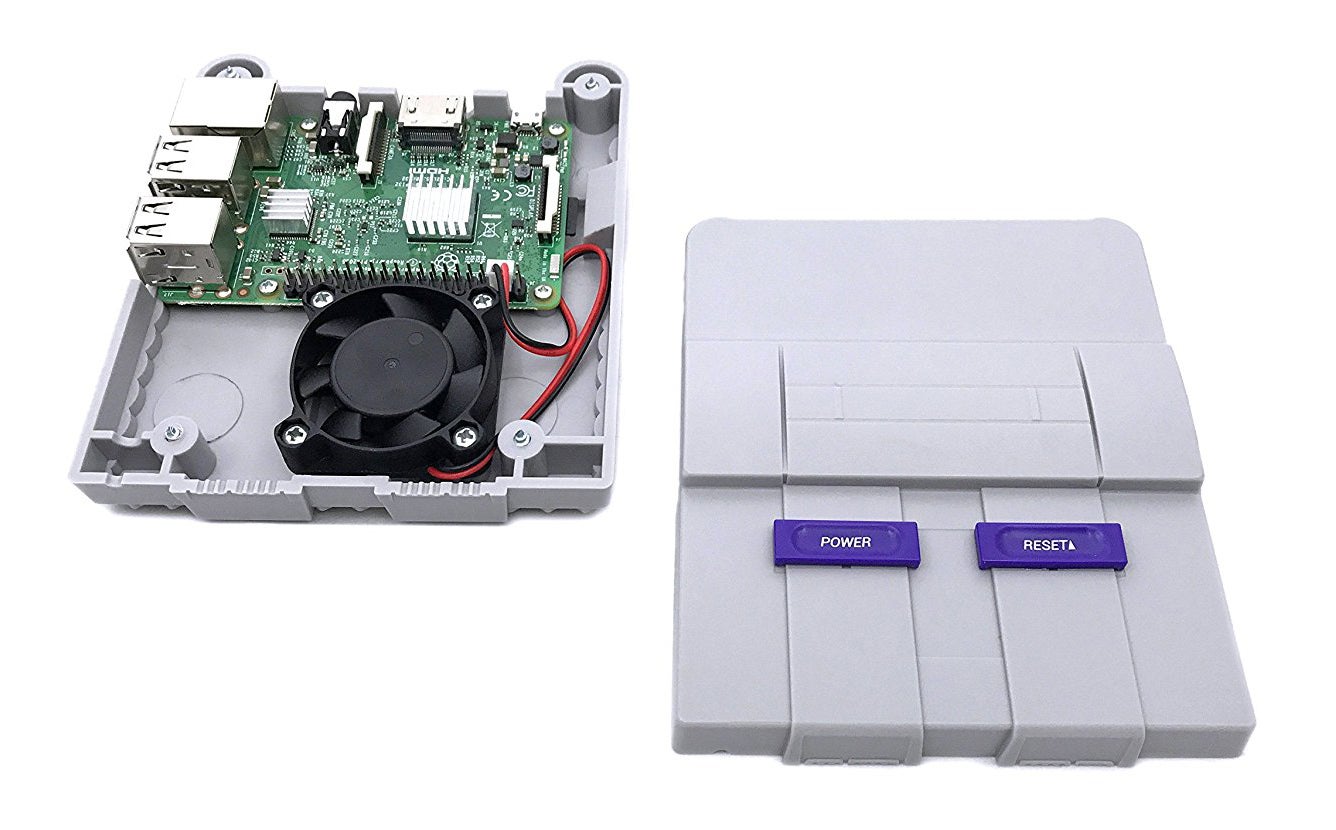

- #Raspberry pi snes emulator how to
- #Raspberry pi snes emulator software
- #Raspberry pi snes emulator Bluetooth
- #Raspberry pi snes emulator download
Do you actually need a USB keyboard? Yes, if you plan on connecting to Wifi or Bluetooth at all, which you for sure should be. I opted for yes if I find myself wanting to do so in the future, and Pi size fans and heat sinks are only a few dollars.Īfter your case is nice and secure around your Pi, insert your MicroSD, power supply, and your keyboard. Only if you find yourself potentially wanting to overclock or try to push the limits of some more demanding emulators would you want to have one. Screw it in, add any potential add-ons like fans or heat sinks you may want (the majority of casual use cases you won't need any heat-redirecting stuff the Pi runs at easy temps most of the time). Grab your case, Pi, and any screwdrivers you may need for assembly. This is where things gets exciting - it's time to assemble our console. Select your freshly formatted SD Card on the left, then you will click on RESTORE BACKUP and select the Retropie image you downloaded (it will be a.

If you're not familiar with tech this part could feel a little intimidating but it's super easy - it's fairly similar to burning a CD. If you're on Windows, then you're on your own. There are a few programs out there to do this, but the easiest and noob friendly is ApplePi Baker. Now that we have the file downloaded, we are going to mount it onto the SD card so it's ready to boot up.
#Raspberry pi snes emulator download
Once your card is formatted, it's time to download the Retropie image. Just be careful you format the correct drive and don't brick your main hard drive. If you're on a Mac, it can be done with the Disk Utility app.
#Raspberry pi snes emulator how to
I won't go into detail here as Googling brings up a myriad of options on how to format your card. Your MicroSD card will be the emulator's storage and will stay plugged into your emulator at essentially all times.įirst things first though, you'll need to format your MicroSD card to FAT if it's 32gb or below, and ExFAT if 64gb or above. Looks akin to the SNES Mini Nintendo put out, and it comes with a fan and LED light, along with rubber grippers along the bottom to keep it from moving. Most Pi cases will be self-explanatory or come with instructions how to properly fit the Pi into the case.
#Raspberry pi snes emulator software
Retropie is not a definitive organization or software for emulation - it's a group effort among many. Don't be confused if you find yourself working with RetroArch or EmulationStation, among others. Retropie is really just a collection of necessary software, drivers, and emulator cores that work in tandem to give you the emulation experience. Retropie is the OS that your Raspberry Pi will run on and use to emulate games. You can use a Raspberry Pi to build seemingly anything.

A Raspberry Pi 3 is essentially a $35 computer complete with USB, HDMI, and built-in Wifi. If you're unfamiliar, Raspberry Pis are one of the most incredible and industry changing products in computing to ever come out. Enter one of the greatest inventions in the past decade, the Raspberry Pi. OpenEmu was killer for getting started on my Macbook, but I wanted a stand-alone system that I could hook up quickly to my TV. When I realized I wanted to go back and experience the decades of classic gaming I missed out on, I realized I either had to suddenly amass a large collection of systems and games I didn't own, or emulate. Sonic and Diddy Kong Racing are literally my earliest memories. I started gaming on a Sega Genesis and Nintendo 64 back in the day. As I'm getting back into gaming I'm finding the urge to play substantially more retro games than I am newer ones.


 0 kommentar(er)
0 kommentar(er)
